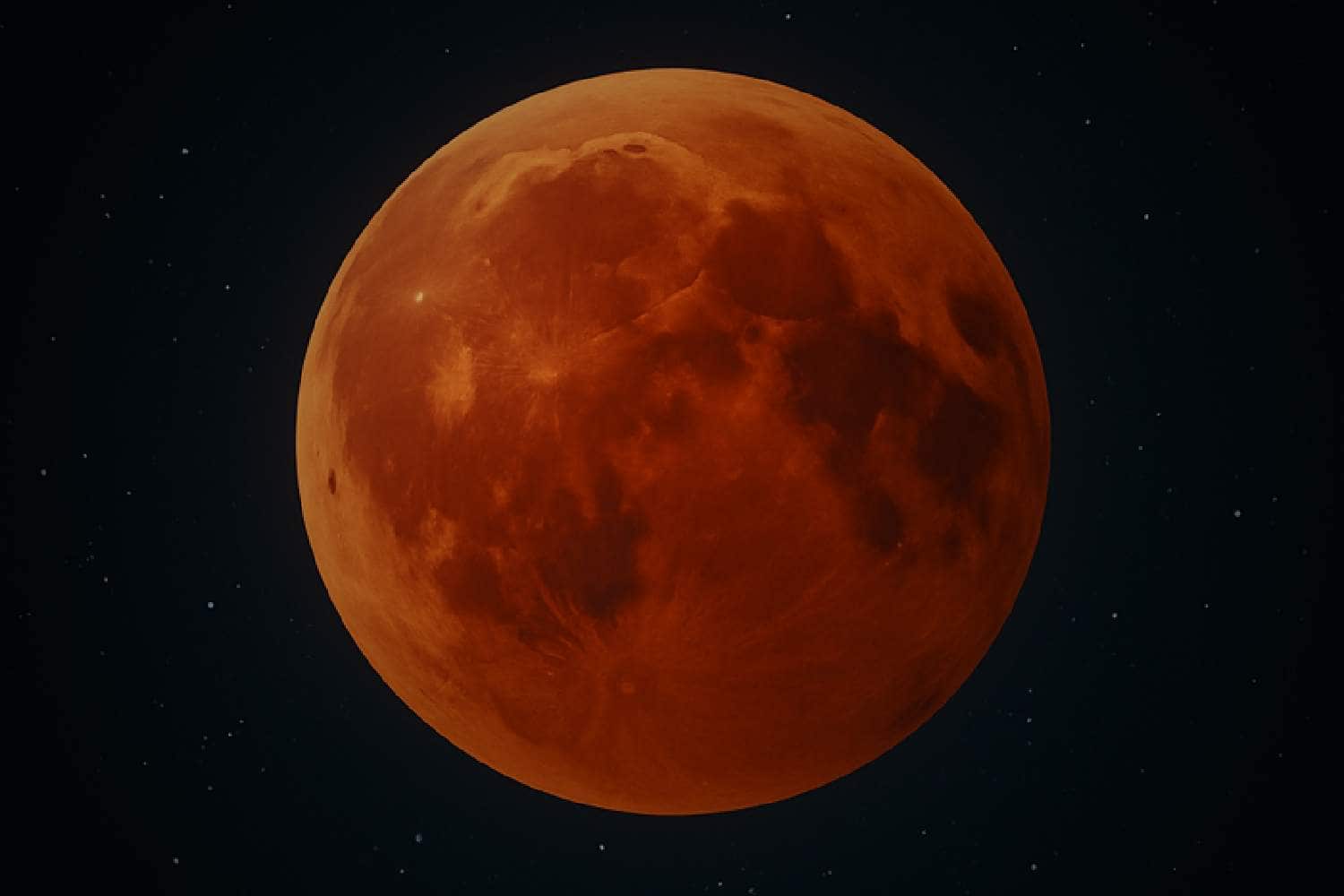This weekend, many parts of the world — including South Africa — will see a spectacular Blood Moon lunar eclipse.
What is a Blood Moon lunar eclipse?
According to NASA, this happens when the Earth moves directly between the sun and the moon. As the Earth blocks sunlight from reaching the moon, the only light that gets through is filtered through our atmosphere.
The Earth’s atmosphere scatters away blue light but allows red and orange light to bend around the planet and reflect on the moon’s surface.
This makes the moon appear to glow a deep red, giving it the name “Blood Moon.”
Unlike a solar eclipse, it is completely safe to look at a lunar eclipse. No glasses or protective filters are needed.
When to see the Blood Moon in South Africa
The eclipse will take place on Sunday, 7 September 2025, with the total eclipse lasting about 82 minutes.
- The partial eclipse begins in the evening as the moon starts to darken.
- The total eclipse, when the moon is completely covered by Earth’s shadow, will reach its peak at 20:11 (SAST).
- The moon will glow red for just over an hour before gradually returning to its normal colour.
This makes it one of the longest and most vivid lunar eclipses in years, according to astronomers.
Best places to watch in South Africa
Table Mountain National Park has warned of heavy traffic and congestion around popular vantage points such as Lion’s Head, Signal Hill, and Kloof Corner, where crowds are expected to gather for the best views.
Spokesperson JP Louw advised visitors to plan ahead:
“We expect high volumes of people heading to these areas. We urge the public to exercise caution and patience, and to respect safety protocols when visiting the mountain at night.”
The moon will be visible across the country, provided the skies are clear. Urban areas with high levels of artificial light may reduce visibility, so stargazers are encouraged to head to darker, elevated areas.
Why this eclipse is special
This eclipse is part of a rare sequence of astronomical events in 2025.
After the Blood Moon, the next three full moons — October’s Harvest Moon, November’s Beaver Moon, and December’s Cold Moon — will all be supermoons, meaning they will look larger and brighter than usual.
In addition, just two weeks after the lunar eclipse, a partial solar eclipse will be visible in parts of the Southern Hemisphere.
